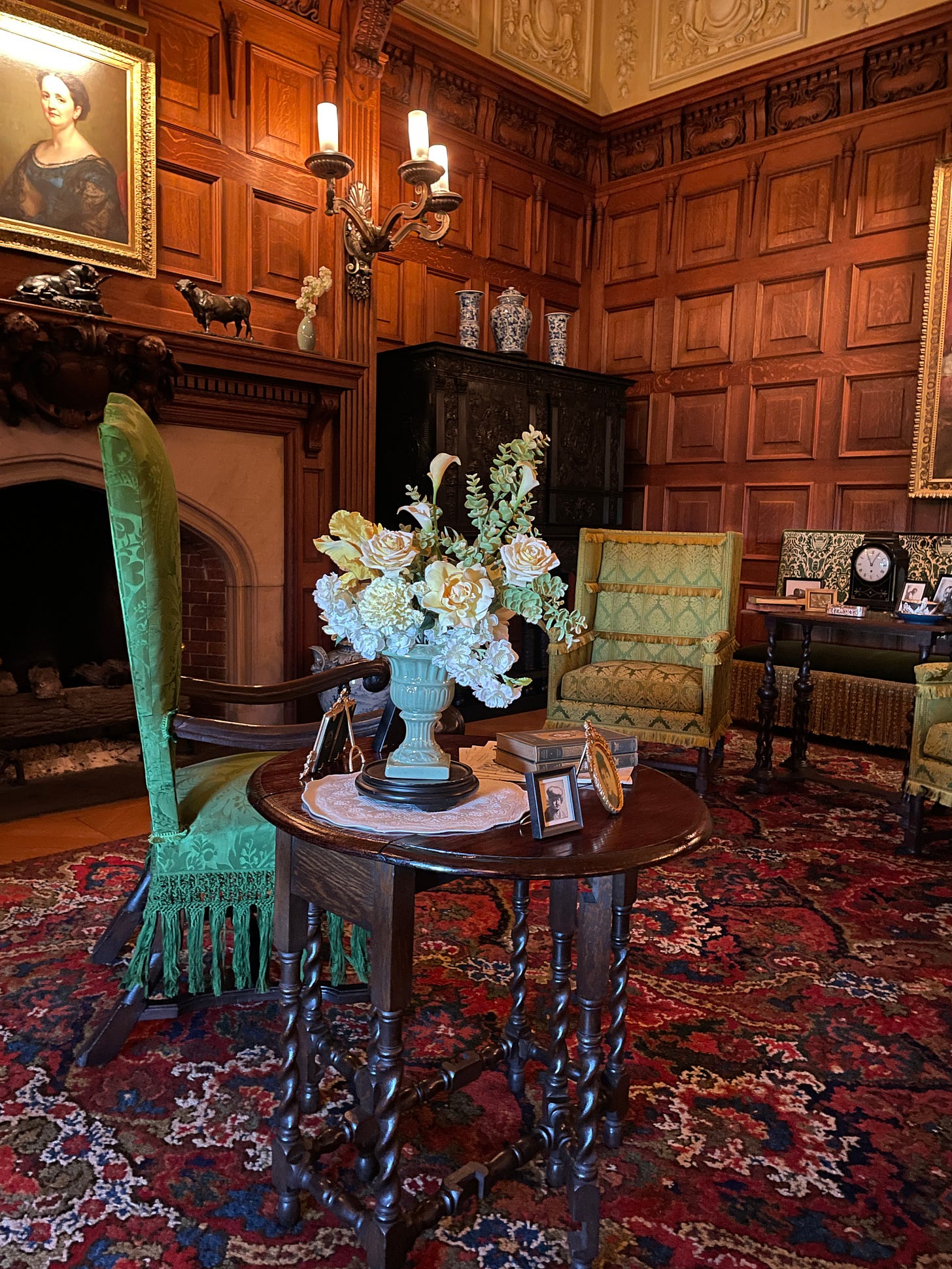I’m about to question the place where I was curator for seven years. Biltmore Estate is the largest historic house museum in the United States. It’s in Asheville, North Carolina, and is filled with the original art and furnishings of George Vanderbilt’s time when he lived there.
They now have an exhibit on the property of all reproductions. I’ve been thinking about that.
The exhibit, “Tutankhamun: His Tomb and Treasures,” is described by Biltmore as “Featuring nearly 1,000 dazzling expert-crafted replicas of King Tut’s exquisite burial goods, this exhibition is the only opportunity to experience his treasures in their entirety exactly as they were found.”
I haven’t been but I’m sure it’s well-lit, well-laid out, clean, and with opportunities to sit and contemplate. Biltmore always works hard to provide a positive visitor experience.
The core of the exhibit was created in 2008 by Semmel Exhibitions, part of Semmel Concerts, a German entertainment company. They hired artisans to create the artifacts and consulted with Egyptologists to ensure accuracy of the reproductions. The artifacts are described as very detailed. The exhibit has traveled around the world. The King Tut exhibit is one of four exhibits by Semmel Exhibitions that is currently traveling worldwide.
In addition to these 1,000 artifacts, Biltmore has spent three years researching the connections between the Vanderbilt and Cecil families to Egypt and to Howard Carter, the British archaeologist and Egyptologist who discovered Tutankhamun’s tomb.
But the objects aren’t real.
As a past museum professional, I’m fully aware of the challenges of displaying original artifacts and the occasional need to use reproductions. When I was curator of Biltmore House, one of the reproductions I had made was a linen bedspread. The bed was able to be touched by visitors and the French linen bedspread bought by George Vanderbilt in Paris was deteriorating. I debated replacing it with another original one in storage, but decided that one would get destroyed too. I found a local seamstress and she made the reproduction. I felt it was a needed compromise. I’ll note that that room is no longer on the public tour.
There are other reproductions at Biltmore House. Furniture upholstery fades and deteriorates and get replaced with fabric as close to the original as possible, in many cases even using the original looms in France. Vases that are not original are used for floral arrangements due to frequent handling.

Yet, whenever I described Biltmore House to people unfamiliar with it, I proudly include, “The house is interpreted to the time when George Vanderbilt lived there and all of the art and furnishings are original.” To me, the few reproductions found throughout the House were tied closely to preservation efforts and that felt acceptable.
Visitors to all types of museums often ask, “Is that real?” As humans, we appreciate and have a sense of awe and wonder when admiring real artifacts. We tell ourselves that they are authentic. We feel a direct connection to the past.
So, I have mixed feelings about the exhibit. Will I go see the exhibit and be awed by the historic insights and the stories about the Vanderbilt and Cecil family connections? Or will I wander through feeling let down because the objects aren’t real? Or, maybe I’ll feel a bit of both.
What are your thoughts? Not just about this exhibit, but about real versus reproduction in general? Do authentic artifacts speak to you? Or do the stories about the artifacts override your interest in the authentic?
Thank you for being here at The Savvy Museum Visitor. My goal is to provide opportunities for you to expand your curiosity, your knowledge, and your wellbeing by reading about, admiring, and visiting museums. -Susan





Reproductions can be a very useful way to help visitors imagine the story you are trying to tell. The amount of reproductions on display, as you described in the Biltmore Estate is concerning from a traditional museum standpoint. Museums are the guardians of physical history not in the (re)creation of history. But for the sake of understanding recreations seem to be a necessary option (if they are properly displayed as reproductions and not as genuine artifacts). With VR and touchscreen exhibits becoming more common I wonder if these reproductions will start becoming digitized, to save money while offering a broader reach via the internet. I enjoyed your thoughts!
I'm fine with reproductions, so long as they are well done.
I address a cloesly related issue in this post I write last year (I know its bad form to link to your own work in comments, but I think you already subscribe to me -- likely but didn't when I published this piece about exactly why we feel the need to be in the presence of "original" art):
https://benloomis.substack.com/p/the-most-overrated-painting-of-all
(It's about the Mona Lisa. And by the way, the Prado has a copy/reproduction which may be a better way to expereince what Da Vinci intended that the original in th Louvre.)